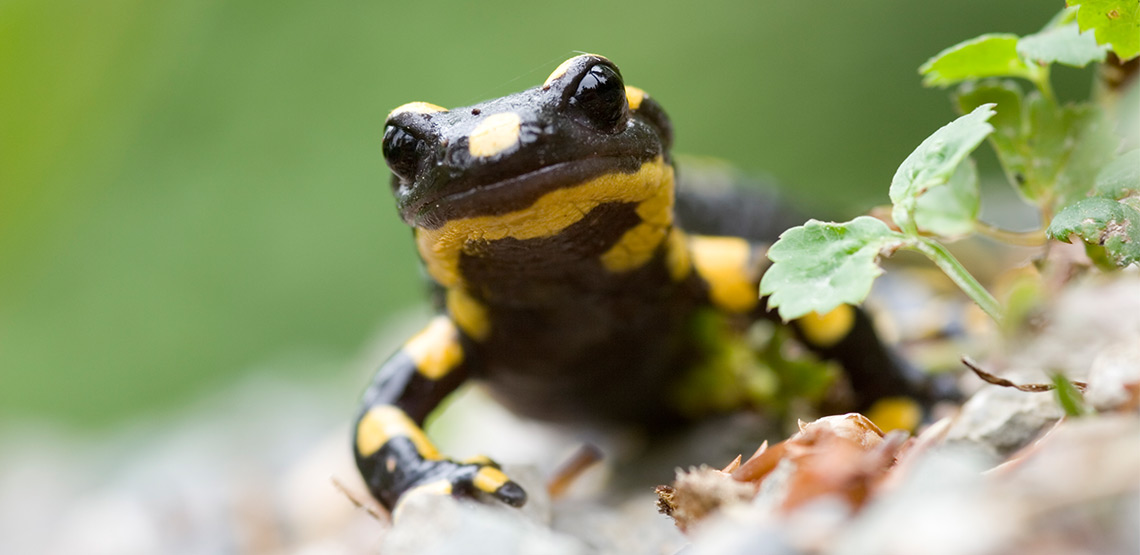A Pet Owner's Guide to the Salamander
Salamanders make great pets for their ease of care as well as the many distinctive markings and colorings across different breeds that make them interesting to look at. Still, like all amphibians, it does take work to maintain these pets, so be sure you can answer questions like "What do salamanders eat?" and "How do I protect my salamander from disease?" before you bring one home.
One other issue to keep in mind is that due to over-capturing, the population of many salamander breeds is depleting. Be sure you purchase a salamander that has been bred in captivity, not taken from the wild.
Common Species Kept as Pets
Fire Salamander
The fire salamander originates from Europe. Its coloring is striking, consisting of a black body that is marked with vibrant yellow (often with red and orange shades mixed in) spots or stripes. Fire salamanders are most active during the night and when they are out of direct light. They can grow to a size of 8 inches.
Spotted Salamander
No surprise, the spotted salamander gets its name from the yellow spots that dot its dark blue or black body. In the wild, these salamanders spend most of their time underground, and they also like to hide under rocks. On average, the spotted salamander grows to a size of 6 to 7.5 inches. They originate from eastern Canada and the eastern and Midwestern United States.
Tiger Salamander
Tiger salamanders originate from the United States, Mexico and Canada. Like spotted salamanders, they like to spend lots of time underground. Though their markings vary by type, most tiger salamanders are yellow or olive green in color, with black or grey stripes and patches. They are a sturdy-looking breed, with thick bodies and heads and stout limbs. On average, tiger salamanders are between 6 and 8 inches in size.
Related Search Topics (Ads):
Axolotl
An axolotl is a larval salamander that generally lives without undergoing metamorphosis. It can regenerate its body parts and heals very quickly if injured. It lives entirely in the water and can grow as large as 18 inches, though 12 inches is the average. The axolotl's appearance includes a wide head, lidless eyes, short limbs and thin digits. Axolotls originate from Mexico and are quickly becoming endangered in the wild.
Health and Care
Feeding: Salamander diet will vary by type, but most salamanders are carnivores. They eat insects such as roaches, slugs and flies, and even certain types of fish and worms. Most salamanders should be fed daily, though some will eat only three times a week. Any excess food in the tank should always be removed.
Housing: Salamanders should be housed in at least a 10-gallon reptile tank with a low level of water. The tank will need a land area made from rocks or a commercial product, as well as plenty of moss or other foliage to act as a hiding place. Salamanders generally don't need an extra heat source for their tank, but you'll want to mist it every day or every couple of days to maintain humidity.
Health Concerns: Salamanders are prone to gas bubble disease and metabolic bone disease, and may experience symptoms such as lethargy, bloating, poor balance and cloudy eyes when ill. These health issues can usually be prevented by monitoring your pet's diet and ensuring it lives in a clean environment.
Life Expectancy: Salamanders can live anywhere from 5 to 25 years, on average.
